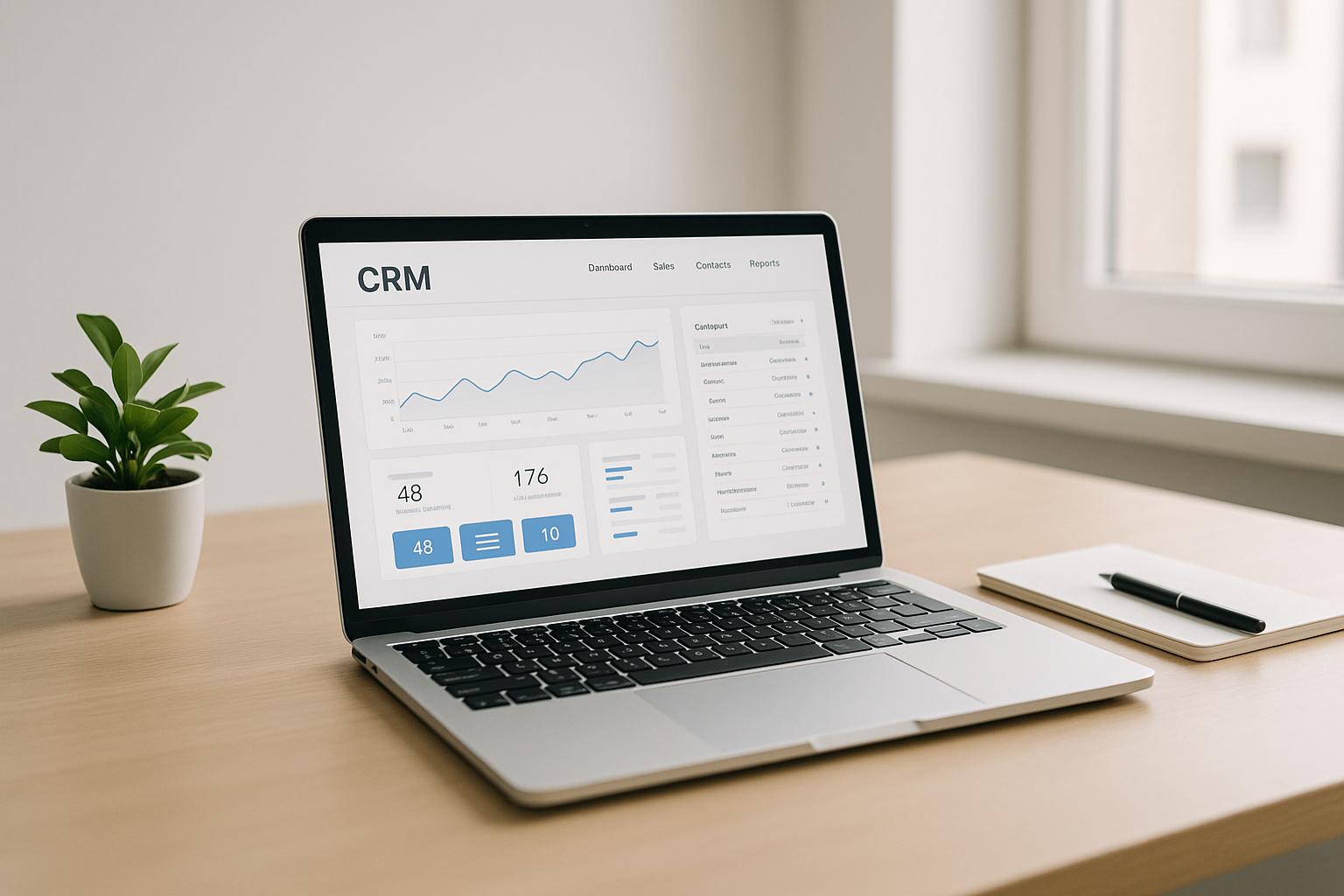Creating an effective lead generation marketing campaign can be challenging.
By following industry best practices around goal-setting, multi-channel execution, and ethical data collection, you can craft high-converting campaigns that deliver quality leads.
In this post, we'll explore critical strategies for lead gen campaign planning, provide tactics for executing cross-channel campaigns, and discuss the importance of respecting contacts through transparent data practices.
Unveiling the Power of Lead Generation Marketing Campaigns
Lead generation refers to the process of identifying and connecting with potential new customers. It is a crucial component of business growth, allowing companies to build a strong sales pipeline. This section will explore best practices for creating effective lead generation campaigns.
Exploring Lead Generation Fundamentals
Lead generation involves proactively capturing the interest and contact details of prospective buyers early in their buyer's journey. It focuses on initiating connections, capturing leads, and nurturing them into sales-qualified opportunities over time through ongoing communication.
Some key aspects of lead generation include:
- Identifying your ideal customer profile
- Crafting targeted offers and content to attract their interest
- Collecting contact details through calls-to-action
- Establishing trust and rapport through helpful, non-aggressive outreach
- Maintaining organized records of all prospect interactions
- Carefully nurturing leads through thoughtful, personalized communication
The Critical Role of Lead Generation in Business Success
High-quality lead generation is the lifeblood of business growth. It enables you to:
- Forecast and predict revenue
- Align sales and marketing to buyer needs
- Uncover customer challenges to build better solutions
- Establish brand awareness and trust
With a steady stream of qualified, sales-ready leads, you can scale pipeline growth predictably. Lead gen is thus a top priority for most B2B companies.
Best Practices for a Successful Lead Generation Marketing Campaign
When designing lead generation campaigns, focus on:
- Collecting data ethically: Be transparent, seek opt-in consent, and explain how data will be used.
- Personalizing for the target buyer: Tailor messaging and content to resonate with their needs.
- Establishing trust and helpfulness: Focus on informing and assisting, not selling.
- Following up persistently but politely: Set reminders to follow up with unresponsive leads.
- Tracking campaign results: Evaluate data like open/click rates to optimize future efforts.
Additional proven tactics include landing pages, content offers, email nurturing, and social media engagement. Measure cost per lead (CPL) to assess performance.
By nurturing leads carefully and guiding them to become happy customers, lead generation drives growth. Follow these best practices, collect data ethically, and keep buyers' needs central to see outstanding returns from your campaigns.
What is lead generation campaigns?
Lead generation campaigns refer to strategic marketing efforts focused on capturing interest and contacts (leads) for a product or service. The goal is to identify and qualify potential customers.
Effective lead generation involves:
- Defining your target audience and ideal customer profile
- Crafting persuasive offers tailored to their needs (e.g. content downloads, free trials, consultations)
- Driving traffic to landing pages using various channels like paid ads, email, social media, SEO
- Capturing leads via forms on landing pages
- Scoring and nurturing leads through marketing automation until sales-ready
Key elements of a successful lead gen campaign include relevant and valuable offers, optimized landing pages, and multi-channel promotion driving visitors to convert into leads. As leads progress through the sales funnel, they require ongoing nurturing with useful content to develop into sales opportunities.
The process enables businesses to generate interest, build a pipeline of potential customers, and facilitate lead conversion into sales. This supports business growth objectives in a measurable and scalable manner.
What is lead generation marketing plan?
Lead generation is the process of identifying, nurturing, and qualifying potential customers to build a sales pipeline. An effective lead generation marketing plan focuses on driving inbound interest to capture contact information for future sales nurturing.
Here are some best practices to develop a successful lead generation marketing campaign:
Define your target audience
- Identify your ideal customer profile including demographics, interests, pain points
- Create detailed buyer personas to address their specific needs
- Perform market segmentation to focus your efforts on high-value subsets
Set clear campaign goals
- Number of leads desired
- Lead quality benchmarks
- Expected conversion rates
Create compelling offers
- Lead magnets like free trials, content offers, consultations
- Ensure relevance, value, and exclusivity
Choose marketing channels
- SEO, content marketing, email, social media, PPC ads
- Focus on channels aligned to your audience
Promote your offers
- Blog posts, emails, social media, PPC ads
- Drive traffic to targeted landing pages
Nurture and qualify leads
- Lead scoring, lead nurturing workflows
- Qualify to identify sales ready leads
An optimized lead generation plan combines inbound marketing, lead nurturing, and sales processes to boost pipeline growth. Define your audience, set campaign goals, create valuable offers, drive traffic, capture leads, and nurture them into sales.
What is a marketing campaign lead?
A lead generation marketing campaign refers to a strategic effort to identify, attract, and convert potential customers into leads for a business. The goal is to generate interest in a company's products or services and collect contact information from qualified prospects to drive future sales.
Here are some key things to know about lead generation marketing campaigns:
- They aim to drive inbound interest and inquiry from potential buyers through tactics like content marketing, email nurturing, social media engagement, SEO, and paid advertising.
- Successful campaigns focus on providing value to prospects upfront without an immediate sales pitch. This builds trust and rapport with potential customers.
- Leads represent contacts who have expressed interest and may turn into sales down the road. Strong lead gen campaigns capture key details like name, company, role, email, and phone number.
- Quality leads are vetted through careful targeting and qualifying questions to ensure relevance and fit. Bad data leads to wasted sales efforts.
- Leads feed into sales pipelines and CRMs. Lead scoring helps sales teams prioritize the most promising prospects for follow-up conversations.
- Ongoing nurturing and relationship-building turns leads into loyal, paying customers over time. Retention ultimately determines the ROI of lead generation activities.
In summary, lead generation marketing aims to drive inbound interest in products or services and capture contact details for future sales conversion. Quality lead data powers everything from email campaigns to appointment setting. Done right, it provides a steady stream of qualified prospects.
How do you create a successful lead generation campaign?
Creating a successful lead generation campaign requires careful planning and execution across 7 key areas:
Identify Campaign Objectives
Clearly define what you want to achieve from your campaign. Common goals include:
- Generate new sales qualified leads
- Grow your contact list
- Promote a new product/service
Research Target Audience
- Build detailed buyer personas to understand your ideal customers' needs, challenges, and motivations.
- Identify where they consume content online.
Optimize for SEO
- Research keywords and topics that align with your campaign goals.
- Create optimized landing pages and content that rank for those terms.
Create an Irresistible Offer
- Lead magnets incentivize visitors to exchange their contact info for something of value like an ebook, coupon, or free trial.
Craft a High-Converting Landing Page
- Focus on a single call-to-action and keep copy succinct.
- Emphasize value over features.
Diversify Marketing Channels
- Leverage a mix of organic and paid tactics like social media, PPC ads, email, and content marketing.
Place Messaging Strategically
- Identify online spaces and publications your audience actively engages with.
- Tailor messaging to resonate in each platform.
sbb-itb-8aac02d
Developing a Lead Generation Campaign Plan
Setting Clear Goals and Performance Metrics
Defining clear goals and key performance indicators (KPIs) is an essential first step when developing your lead generation campaign plan. This provides a measurable way to track performance and optimize efforts over time.
Some examples of common goals and metrics to consider include:
- Cost Per Lead: Calculate your overall ad spend divided by the number of leads generated. Assess if your target cost per lead is being achieved.
- Lead Quality Score: Grade incoming leads based on level of interest, budget, authority etc. Set targets for percentages of marketing qualified vs sales qualified leads.
- Sales Conversion Rates: Determine what percent of leads turn into paying customers. Set realistic conversion benchmarks.
Additional metrics like click-through-rate, email open rates and more can provide further insights into campaign effectiveness.
Ultimately the KPIs set should directly align with core business and revenue goals so progress can be continually assessed. Revisit and adjust targets as needed.
Creating Buyer Personas for Targeted Marketing
Developing detailed buyer personas for your target audience is key for personalized, impactful campaign messaging.
Key elements to research and define for your personas include:
- Demographics: Industry, company size, role, location etc.
- Challenges & Motivations: Their problems to be solved, goals and aspirations.
- Buying Journey: Typical triggers and steps leading to a purchase.
- Content Preferences: The formats and channels they favor for consuming information.
These insights should directly inform content creation and distribution. Ensure campaign landing pages, emails, ads and more clearly speak to the personas built.
Continually refine your understanding of prospects as new data comes in through surveys, interviews etc. Personas are not static.
Choosing the Right Lead Generation Tools and Tactics
With goals established and target audience understood, the central tactics and platforms leveraged should clearly aim to reach and convert high-value personas.
Common lead generation components to consider include:
- Paid Ads: Google, Facebook, LinkedIn etc.
- Landing Pages: Lead capture and conversion optimization.
- Email Nurturing: Drip campaigns, promotions, re-engagement.
- Events: Webinars, seminars, tradeshows.
- Referral Programs: Incentives for customers to share your brand.
Prioritize tools and channels where your personas are actively engaged. Set clear metrics for each tactic to continually gauge performance.
Be sure to also map out the broader workflow and hand-offs between marketing generated leads through sales follow-up and closure.
Executing Multi-Channel Lead Generation Marketing Campaigns
This section explores proven tactics for executing multi-channel lead generation marketing campaigns, with real-world examples and top tips offered.
Leveraging Google Ads for Lead Generation
Google Ads offers a powerful platform for driving lead generation through pay-per-click (PPC) advertising. Here are some best practices:
- Research and select commercial intent keywords that indicate users are actively looking for products or services. Targeting informational keywords tends to have lower conversion rates.
- Craft succinct, benefit-driven ad copy focused on your offering. Include a clear call-to-action for users to click and learn more.
- Drive traffic to dedicated, conversion-optimized landing pages. Ask only for essential contact details, provide more information on your offerings, and make the lead capture process seamless.
- Continuously optimize based on cost-per-lead (CPL) rather than just clicks or impressions. Prioritize conversions as the key goal.
Example: An IT services company ran a Google Ads campaign focused on keywords like "managed IT services" and "vCIO services". By optimizing their landing page and ad copy over time, they lowered CPL by 32% and generated over $480k in new business.
Boosting Lead Generation with Social Media Campaigns
Promoting lead gen offers directly within social platforms can be highly effective for driving new contacts.
- Run Lead Ads on Facebook and LinkedIn to reach your target audience and prompt them to share contact details to receive gated content.
- Promote lead magnets like ebooks, whitepapers, and email courses via organic social posts and paid ads. Include links directly to landing pages.
- Leverage detailed targeting capabilities on platforms like Facebook to segment your audience and serve relevant lead gen messaging to each group based on their interests and attributes.
Example: A startup selling HR software ran multiple Lead Ad campaigns on LinkedIn targeting HR managers and recruiters, generating over 2,200 leads in 6 months at a CPL of $58.
Optimizing Landing Pages for Maximum Lead Capture
Well-designed landing pages are essential for converting interested visitors into quality leads.
- Ensure forms are short, only asking for essential contact details. Additional fields tend to decrease conversion rates.
- Use a contrasting color for your call-to-action buttons to capture visitor attention.
- Share social proof like testimonials from current customers to establish credibility and trust.
Example: An accounting software company optimized their PPC landing pages by simplifying forms fields and making the CTA button red. This lifted conversion rates by 19%.
Ethical Data Collection in Lead Generation
Ensuring Transparency in Data Collection
Transparency is key when gathering prospect data. Clearly communicate upfront how their information will be collected and used before requesting it. Provide easily accessible privacy policies and terms of service that outline what data is gathered, why it is needed, how it will be processed, and the prospect's rights. Reassure prospects that their data is valued and will only be used for legitimate purposes.
Obtaining Explicit Consent from Leads
Before adding any contacts to marketing databases, obtain affirmative consent. Use opt-in checkboxes on web forms with clear messaging, not pre-checked boxes or opt-out flows. Record consent at time of data collection for audit purposes. Refresh consent on a periodic basis as marketing initiatives evolve. Never assume consent based solely on opt-out options or pre-existing business relationships.
Implementing Robust Data Security Measures
Protect sensitive customer data with encryption and access controls. Conduct regular audits to identify security gaps and vulnerabilities. Have an incident response plan ready in case of a breach. Appoint personnel to oversee data practices and provide employee training on ethical data handling. Achieve compliance with regulations like GDPR to assure prospects their information is managed responsibly.
Strategies for Nurturing Leads and Converting Them into Sales
Nurturing leads and guiding them through the sales funnel requires strategic communication tailored to each individual prospect. Here are some best practices for converting leads into loyal customers:
Tailoring Communications for Personalized Lead Nurturing
- Segment your leads database by industry, role, intent signals, and behavior to group similar prospects.
- Create customized nurture streams for each segment, with messaging and offers matched to their interests.
- Prioritize relevant, valuable info over promotional content to build trust and affinity.
- Use lead scoring to determine sales-readiness and adapt nurture strategy accordingly.
Delivering Consistent Value to Maintain Lead Engagement
- Establish a content calendar to continually provide useful, non-promotional resources.
- Publish blog posts, guides, checklists, and other tools prospects actually want.
- Promote new resources through email, social media, and personalized outreach.
- Focus on solving leads' problems rather than touting product features.
Measuring Lead Generation Campaign Effectiveness
- Track not just raw leads generated but also marketing qualified leads (MQLs).
- Connect lead gen campaigns to closed sales with UTMs for full-funnel analysis.
- Calculate return on investment inclusive of customer lifetime value.
- Continually optimize campaigns based on cost per acquired customer.
Thoughtfully nurturing leads takes concerted effort but pays dividends in sales pipeline growth and revenue. Tailoring communications, consistently delivering value, and measuring campaign ROI enables the continual refinement of lead gen strategy for converting strangers into delighted customers.
Conclusion: Maximizing Impact with Lead Generation Marketing Campaigns
Recap: Effective Planning and Execution of Lead Generation
Strategically planning lead generation marketing campaigns is key to driving success. Here are some best practices:
- Clearly define campaign objectives and key performance indicators upfront to shape strategy and creative. Common metrics are cost per lead, conversion rate, sales revenue, and customer lifetime value.
- Segment your audience into buyer personas to target messaging and offers. Understand their pain points and motivations.
- Map out the typical buyer's journey to identify the best stages for lead capture. Many use a combination of top-funnel (blogs, SEO) and mid-funnel tactics (landing pages, lead ads).
- Continuously test and optimize different lead generation techniques. Experiment with various ad formats, landing pages, calls-to-action, and lead magnet offers to improve performance.
The Importance of Ethical Practices in Lead Generation
It's vital to collect and handle consumer data ethically:
- Clearly communicate how data will be used and obtain explicit consent before collection. Don't assume consent.
- Only gather essential contact details and information through lead capture forms. Avoid requesting excessive or unnecessary data.
- Implement robust data security and privacy policies. Encrypt data, limit internal access, and have safeguards against breaches.
Building consumer trust and protecting privacy is paramount for long-term business growth.
Focusing on Long-Term Value in Lead Generation Campaigns
The key metric for lead generation success is sales revenue and lifetime customer value, not just initial conversions.
- Evaluate lead quality by tracking sales cycle length, deal size, and retention. Prioritize leads that convert to high-value customers.
- Continue nurturing and engaging new leads post-conversion to develop the relationship and increase lifetime value.
- Calculate return on investment (ROI) over the entire customer lifecycle - this indicates the true impact to your business.
Sustainable growth requires capturing leads that drive ongoing revenue, not just one-time sales.


